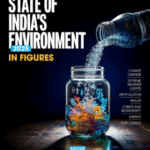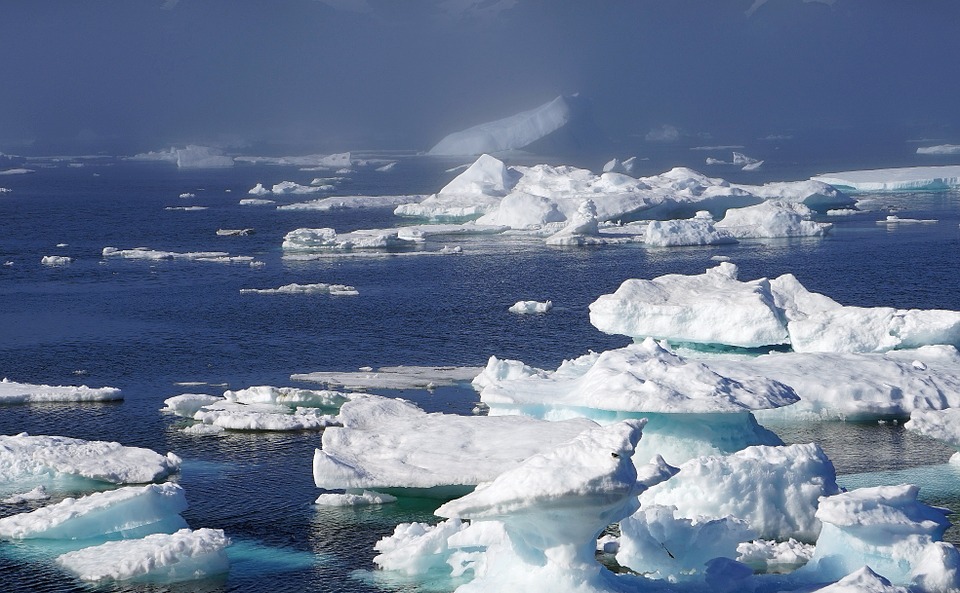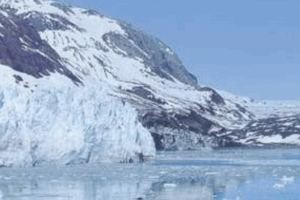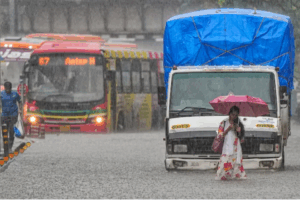SEA LEVEL RISE
Polar Ice Caps Melting Six Times Faster Than in the 1990s
Olivia RosaneMar. 12, 2020 08:10AM EST
CLIMATE
An iceberg melts off of Greenland. Danita Delimont / Getty Images
The polar ice caps are melting six times faster than they were in the 1990s, the most comprehensive look at the data to date has found.
That data, compiled and analyzed by the Ice Sheet Mass Balance Intercomparison Exercise (IMBIE), puts the melting of Greenland and Antarctica’s ice sheets on track with the worst-case-scenario prediction from the Intergovernmental Panel on Climate Change (IPCC). If this trend continues, it could put 400 million people at risk from sea level rise by 2100.
“That’s not a good news story,” professor Andrew Shepherd from the University of Leeds told BBC News.
Shepherd helped lead an international team of 89 polar scientists who analyzed ice loss at both poles using 26 surveys and 11 satellite missions between 1992 and 2018, according to a University of Leeds press release.
They found that Greenland and Antarctica together lost 6.4 trillion tonnes (approximately 7.1 trillion U.S. tons) of ice between 1992 and 2017, raising global sea levels by 17.8 millimeters (approximately .7 inches). Not only that, but the rate of loss accelerated. The ice sheets lost 81 billion tonnes (approximately 89 billion U.S. tons) a year in the 1990s and 475 billion tonnes (approximately 524 billion U.S. tons) a year in the 2010s. This means they are now contributing much more to sea level rise.
“Today, the ice sheets contribute about a third of all sea-level rise, whereas in the 1990s, their contribution was actually pretty small at about 5%. This has important implications for the future, for coastal flooding and erosion,” Shepherd told BBC News.
The Antarctica figures were published in Nature in 2018, while the Greenland figures were published in Nature this week.
The two polar regions have responded slightly differently, according to the press release. Ice melt in Antarctica has contributed 40 percent of the combined total sea level rise and is driven by warm ocean water melting its glaciers. Ice melt in Greenland, which accounts for 60 percent of the sea level rise, is driven partly by ocean water but partly by warmer air temperatures melting the surface of its ice sheet.
In both cases, the extent of the ice loss is clear evidence of the climate crisis, research leader Erik Ivins of Nasa’s Jet Propulsion Laboratory told The Guardian.
“The satellite measurements provide prima facie, rather irrefutable, evidence,” he said.
The findings have serious consequences for the future. The IPCC most recently predicted sea levels would rise 53 centimeters (approximately 21 inches) by 2100, putting 360 million people at risk from coastal flooding every year. But, the new data puts sea levels on track to rise an additional 17 centimeters (approximately 6.7 inches). This would increase the number of people at risk from yearly coastal flooding by 2100 to 400 million.
“These are not unlikely events with small impacts; they are already underway and will be devastating for coastal communities,” Shepherd said in the press release.
However, this future is not inevitable. While Shepherd told The Guardian that the ice caps would melt for another 30 years even if greenhouse gas emissions ceased today, there is still time to limit the amount of melting.
“We can offset some of that [sea level rise] if we stop heating the planet,” he said.
Warmer Current Is Carving Away Greenland Ice Sheet From Below … ›
Greenland’s Ice Sheet Is Melting at Rate That Surpasses Scientists … ›
Ice Sheets | Vital Signs – Climate Change: Vital Signs of the Planet ›
If the polar ice caps melted, how much would the oceans rise … ›


















